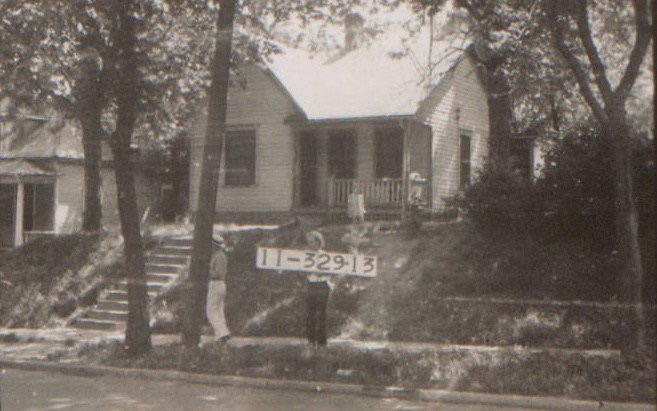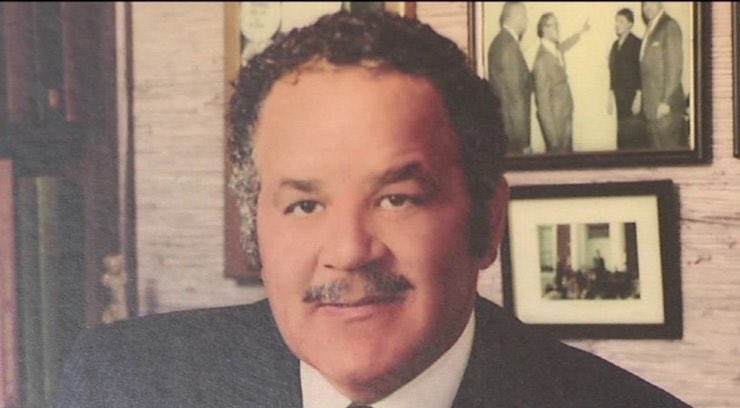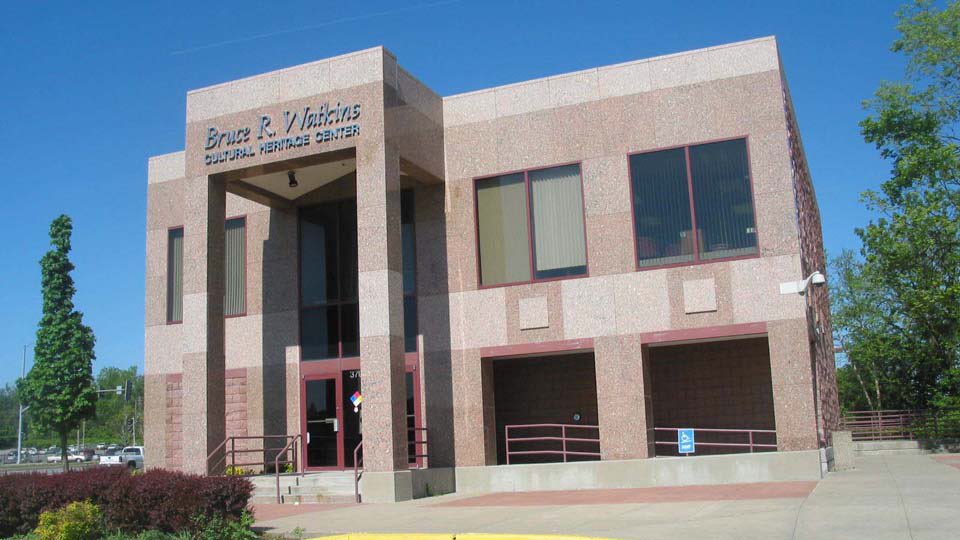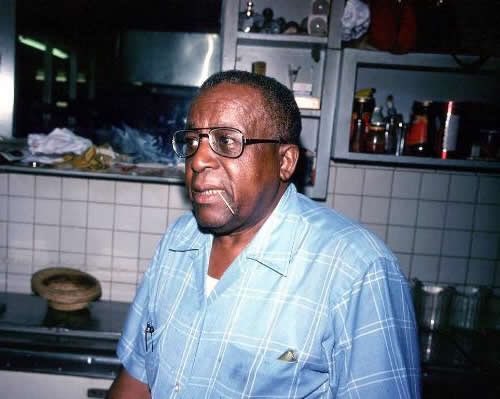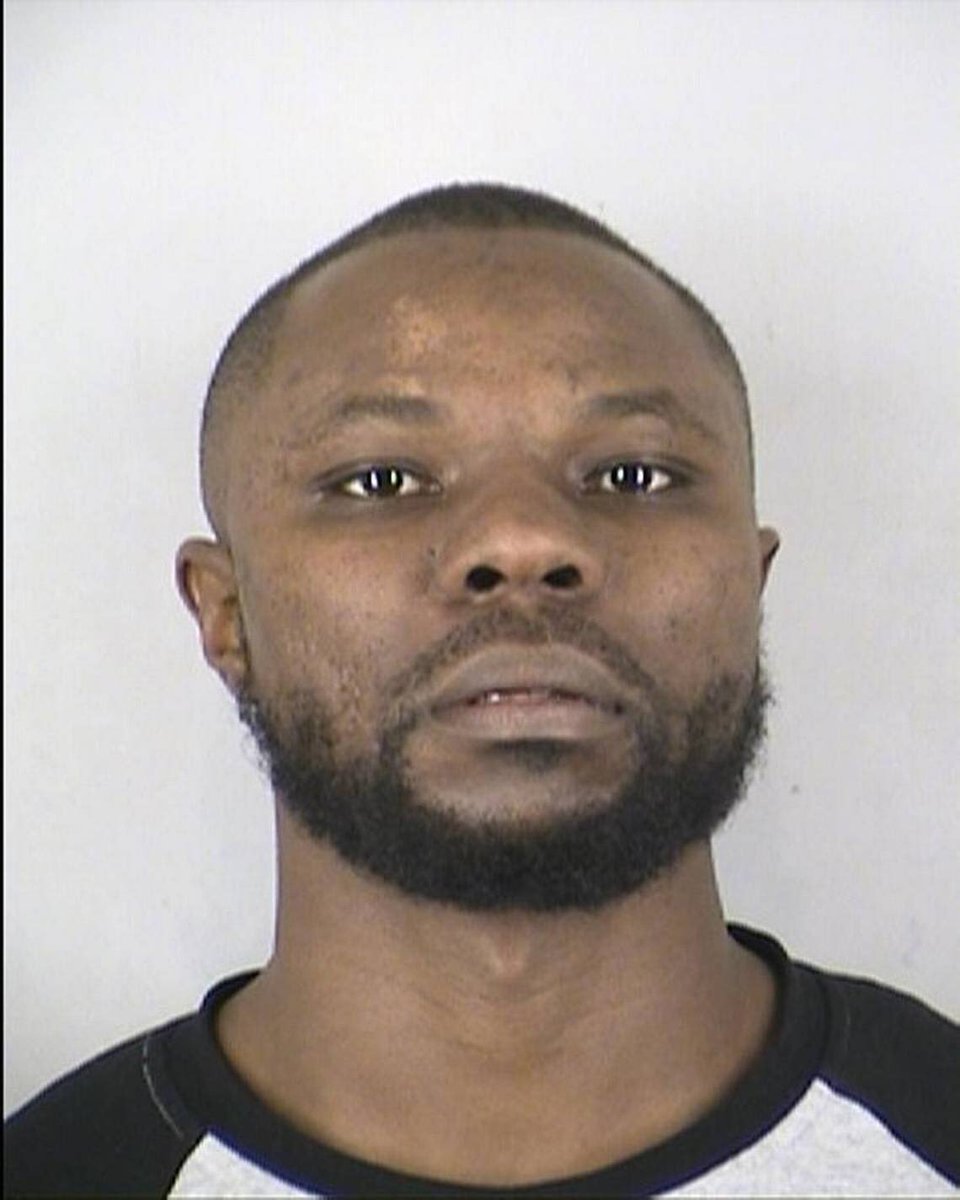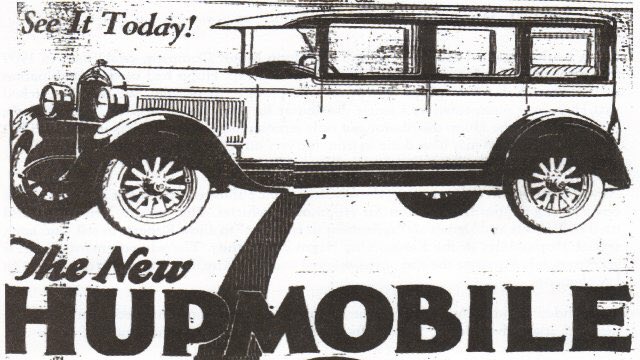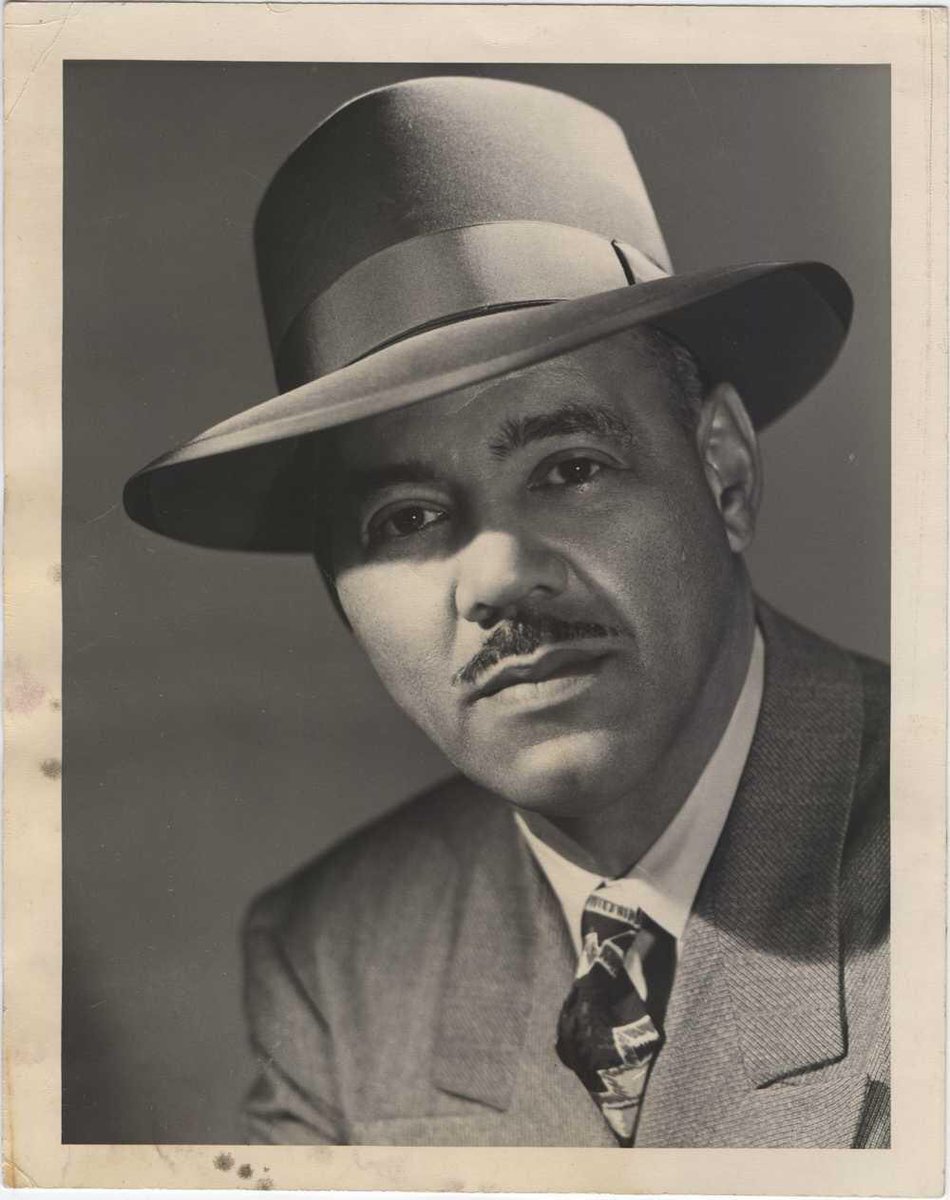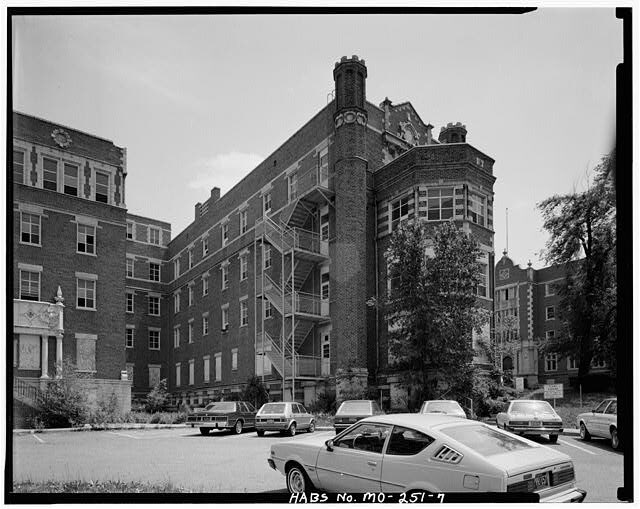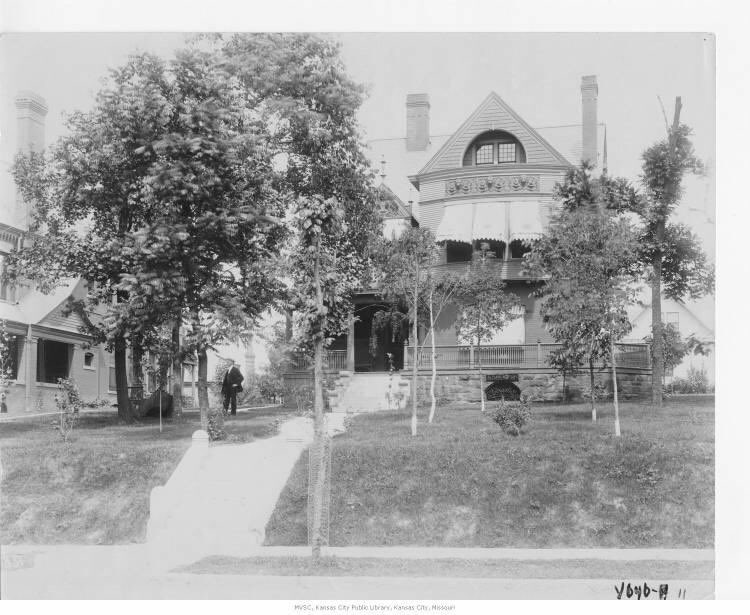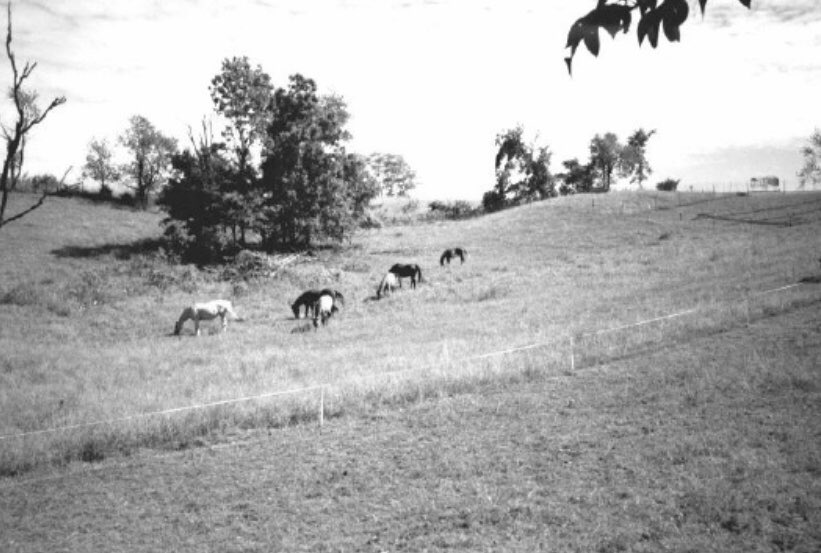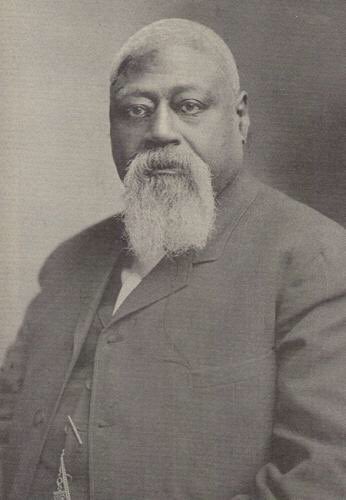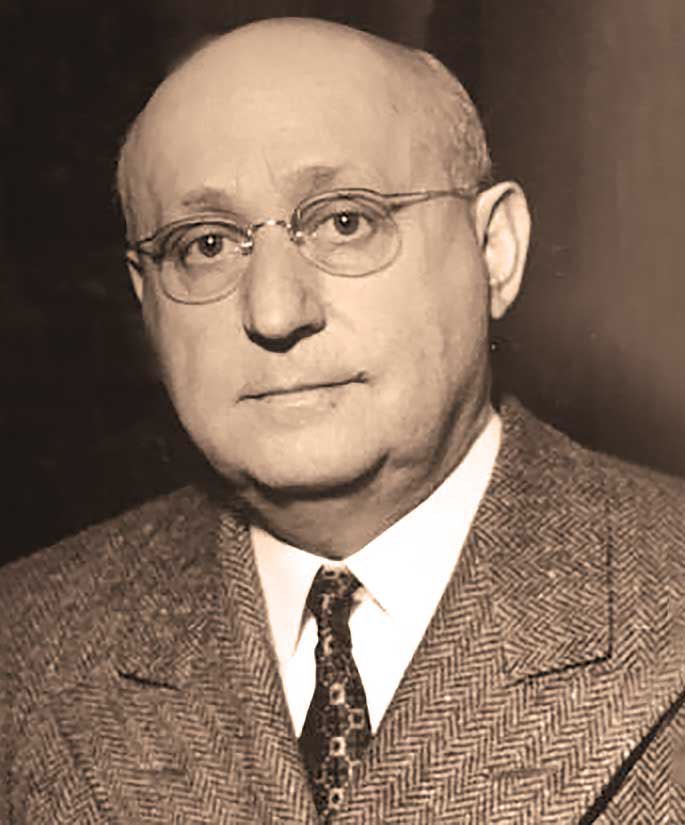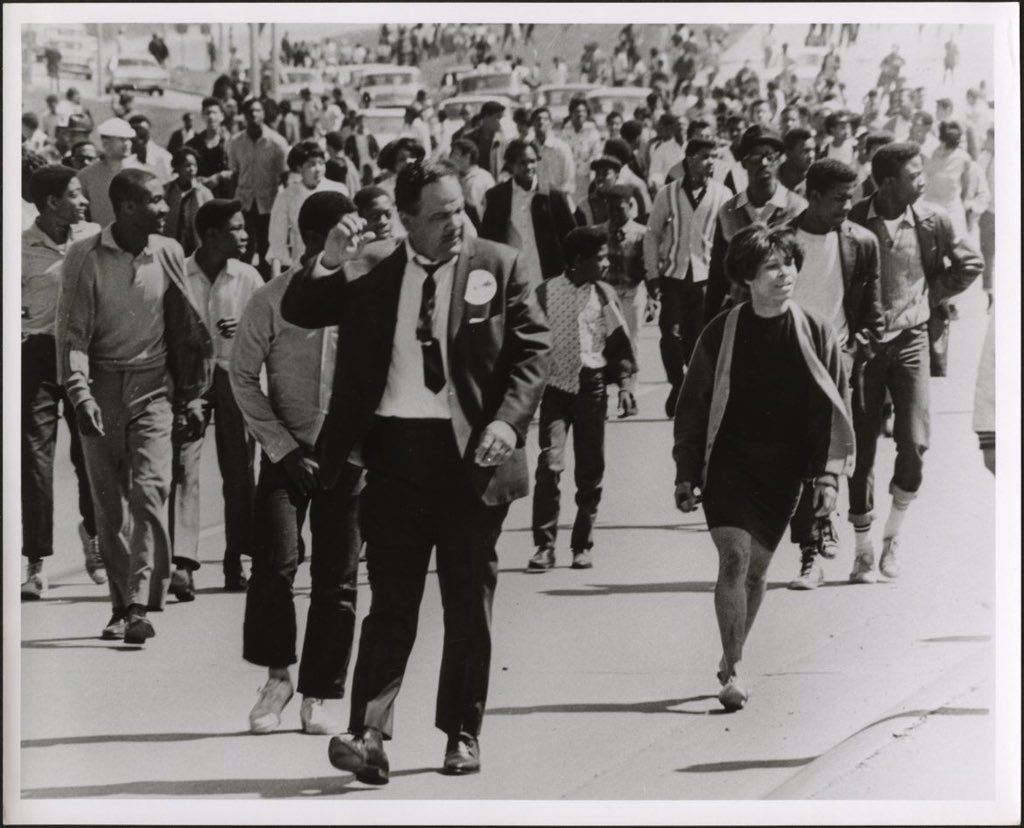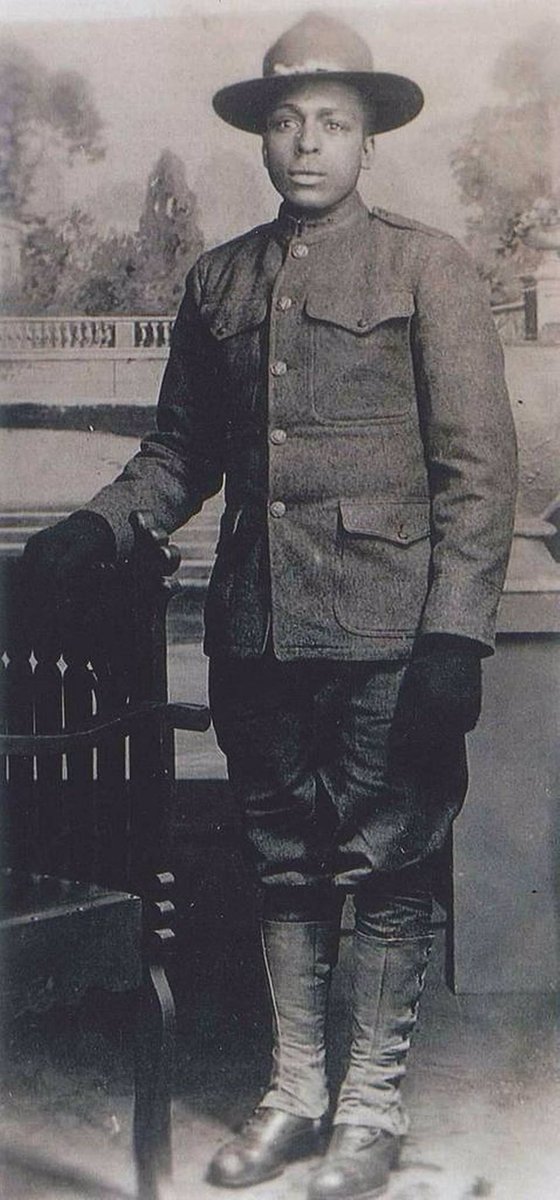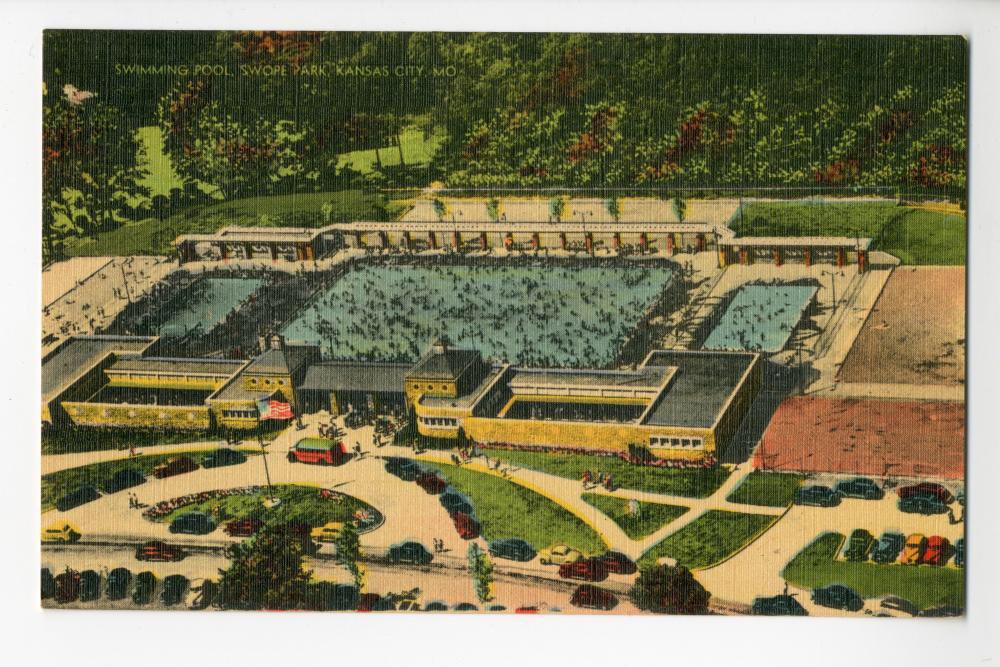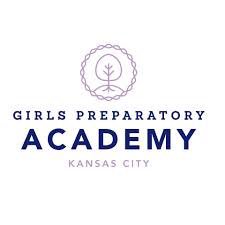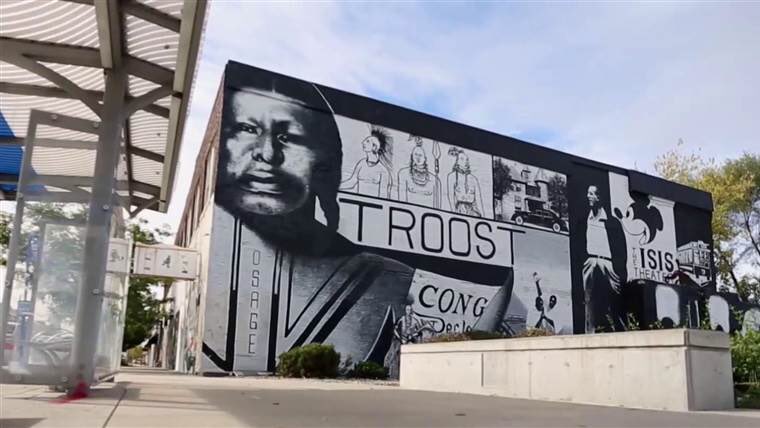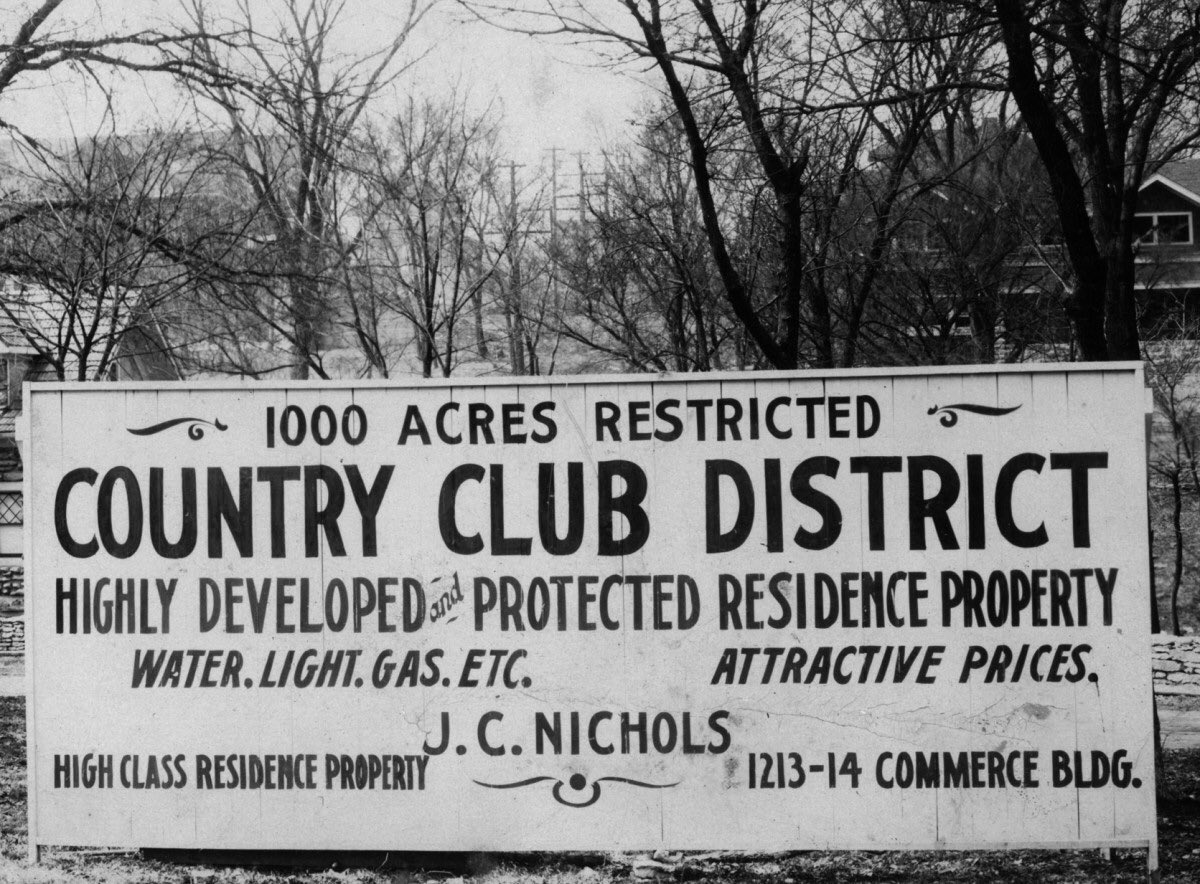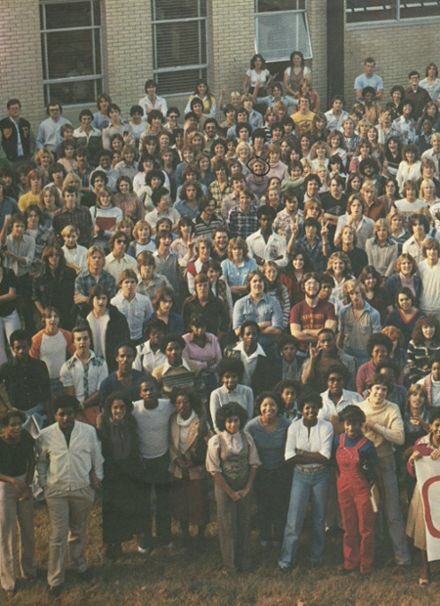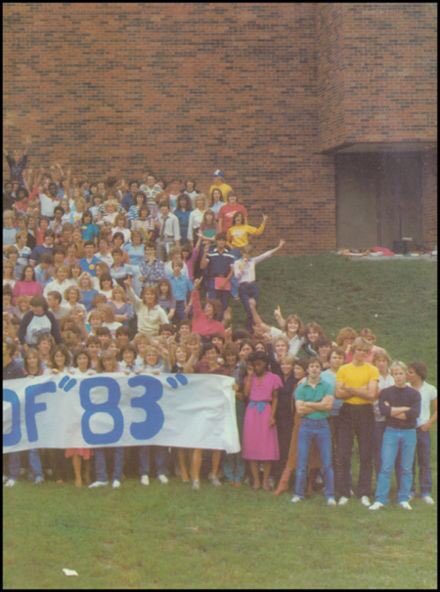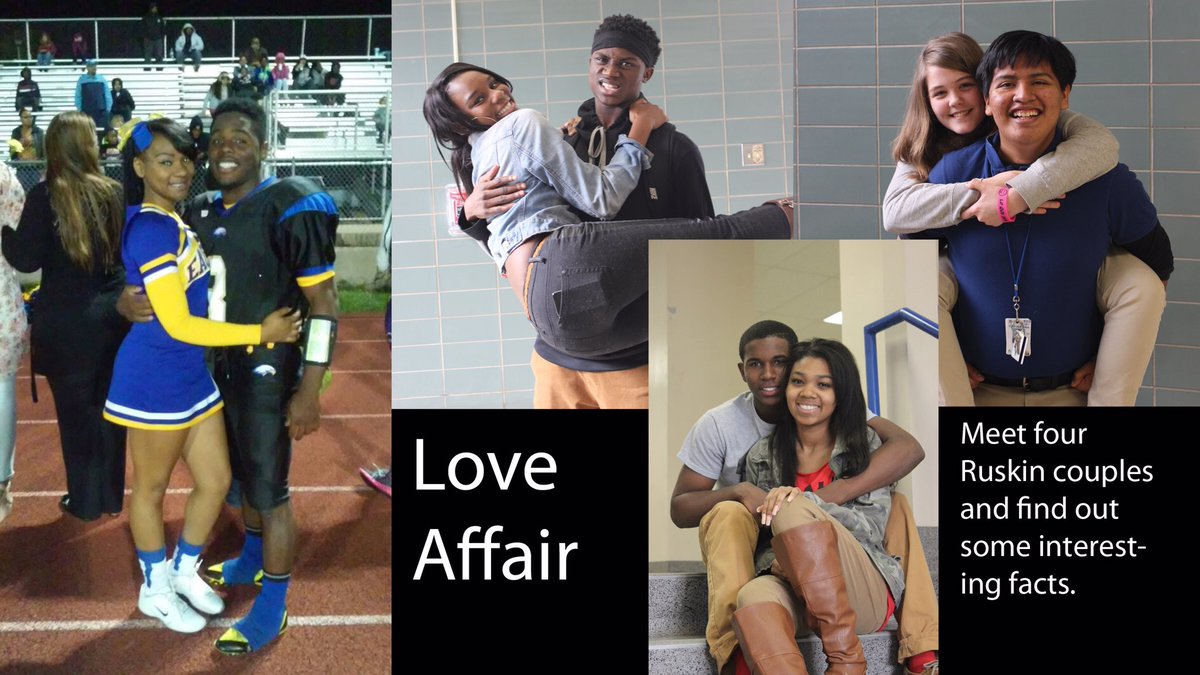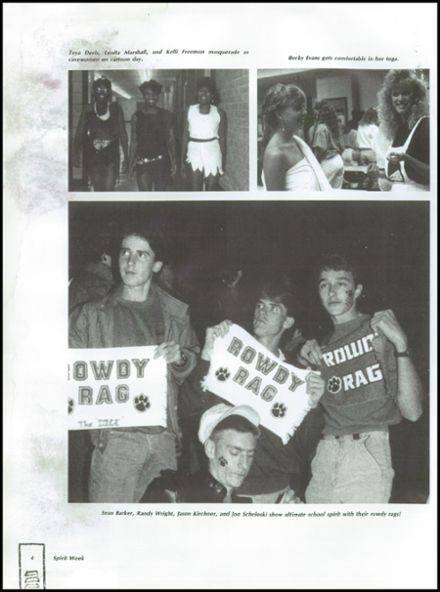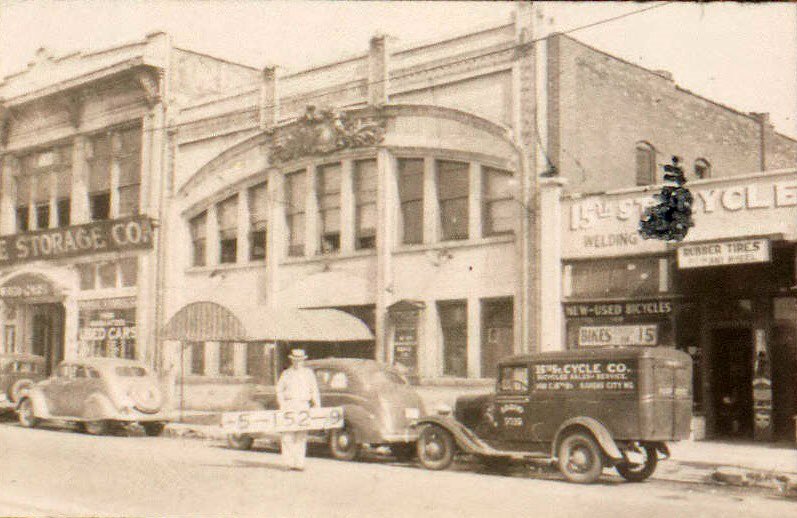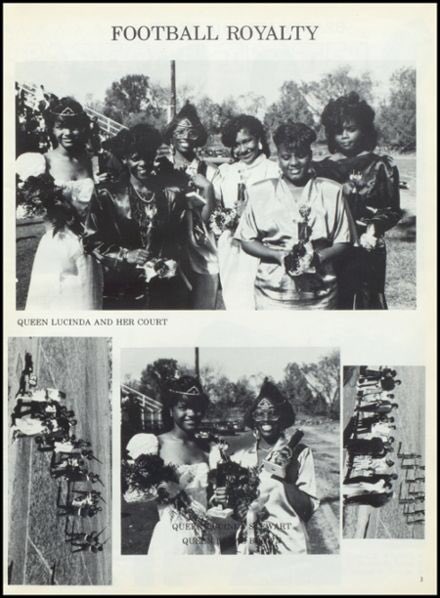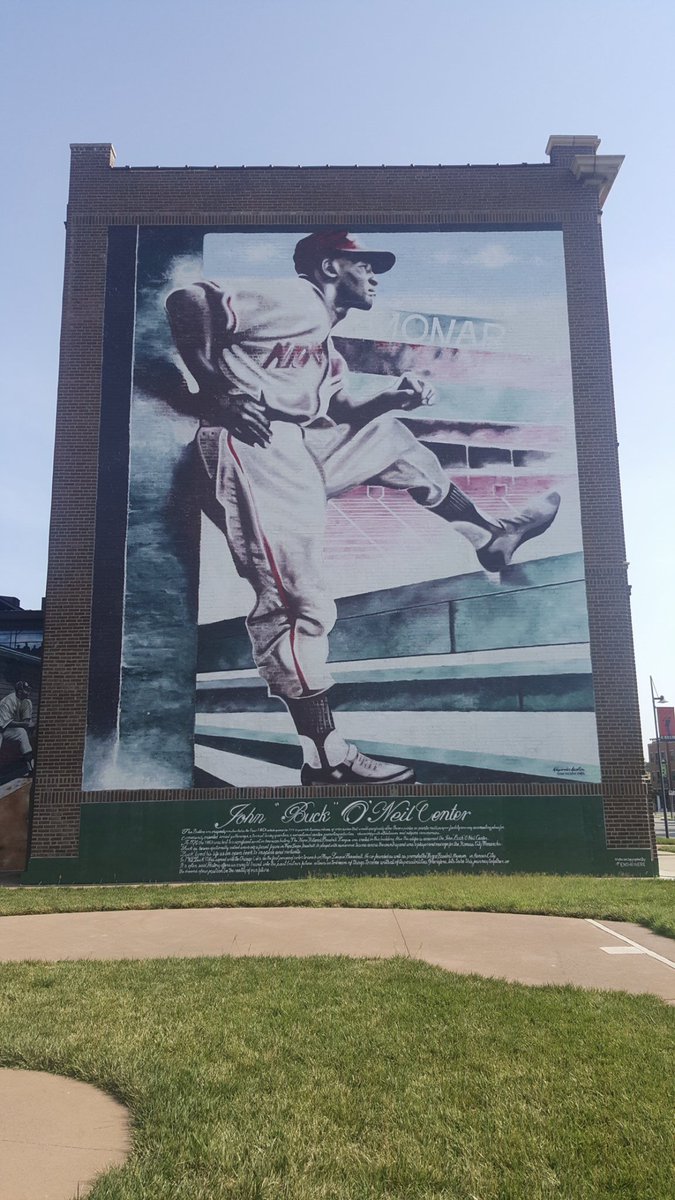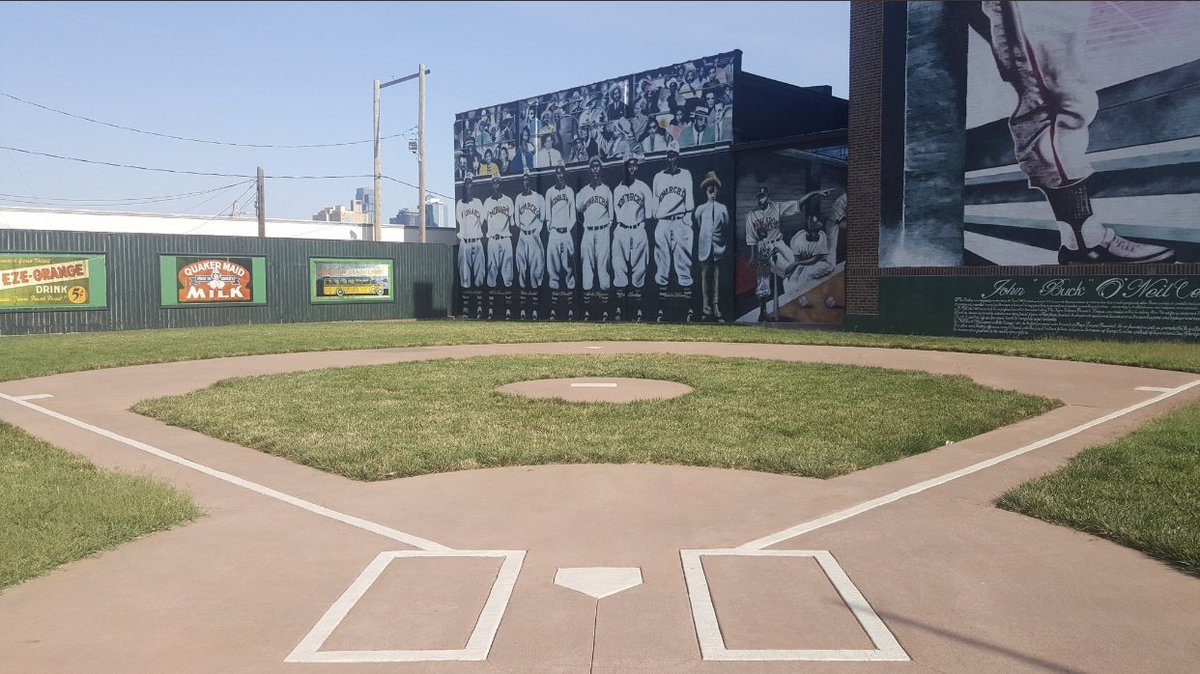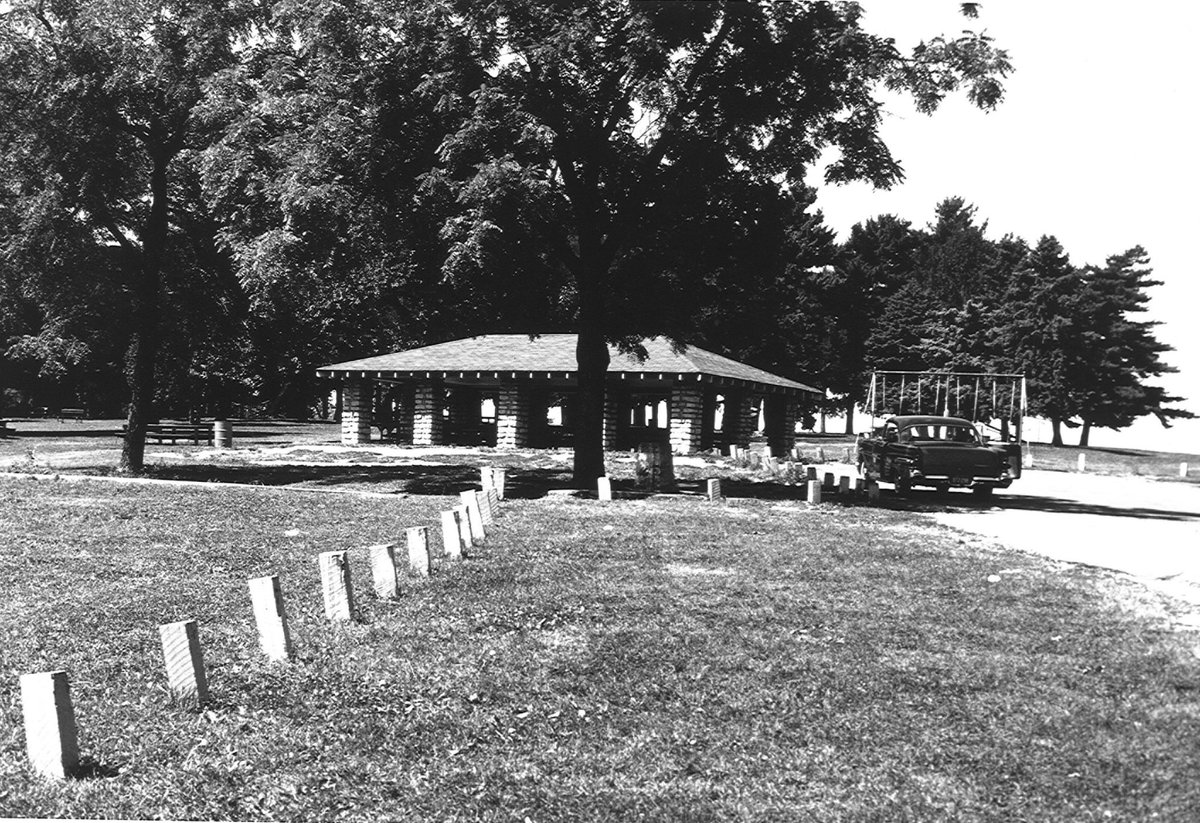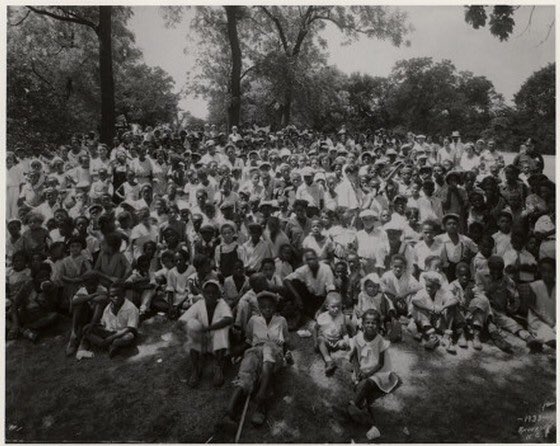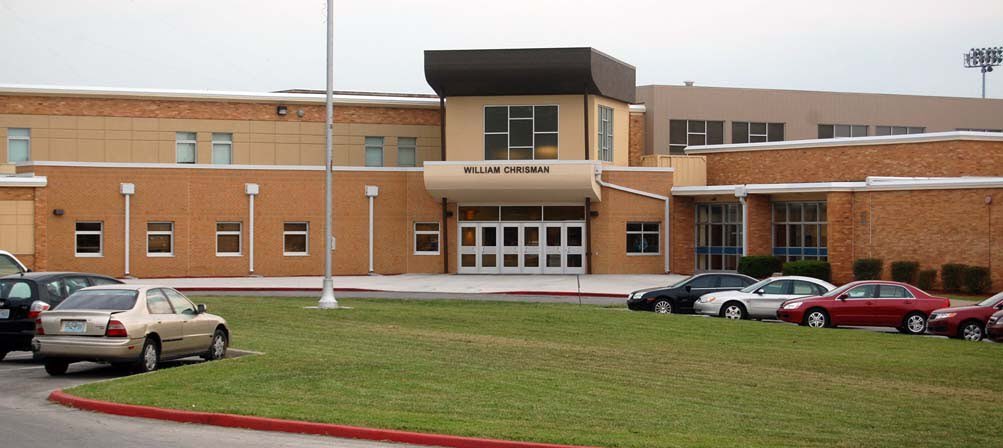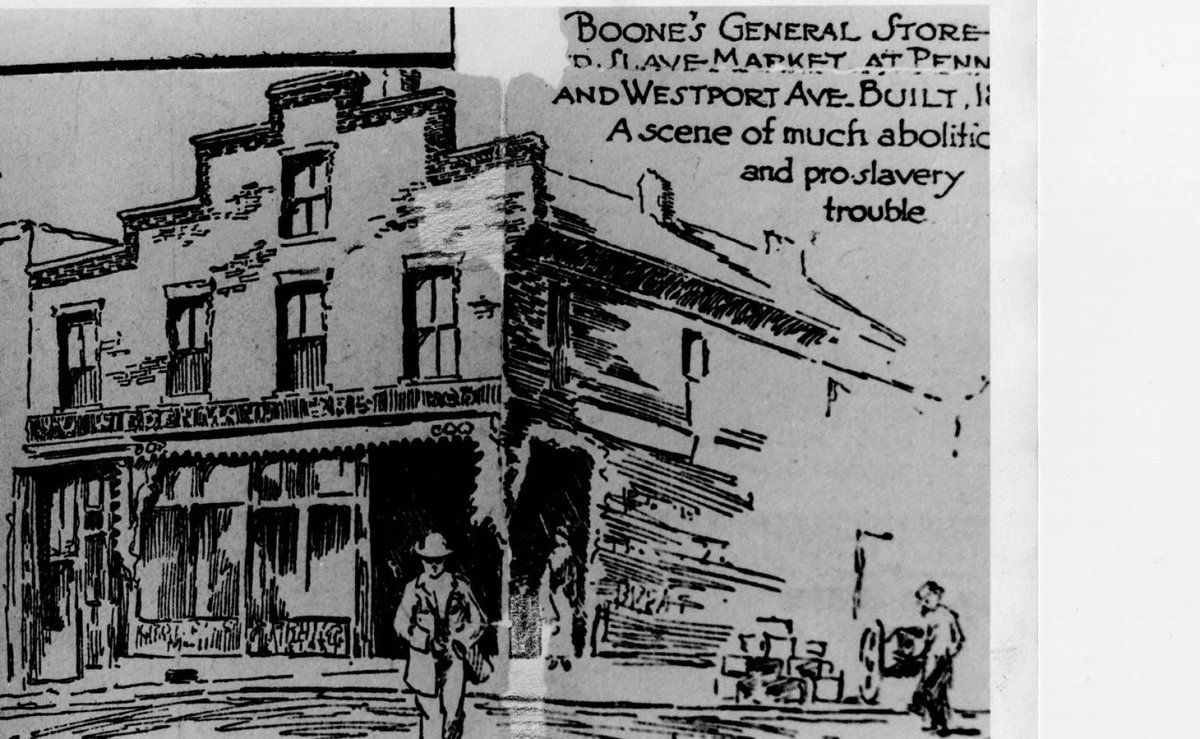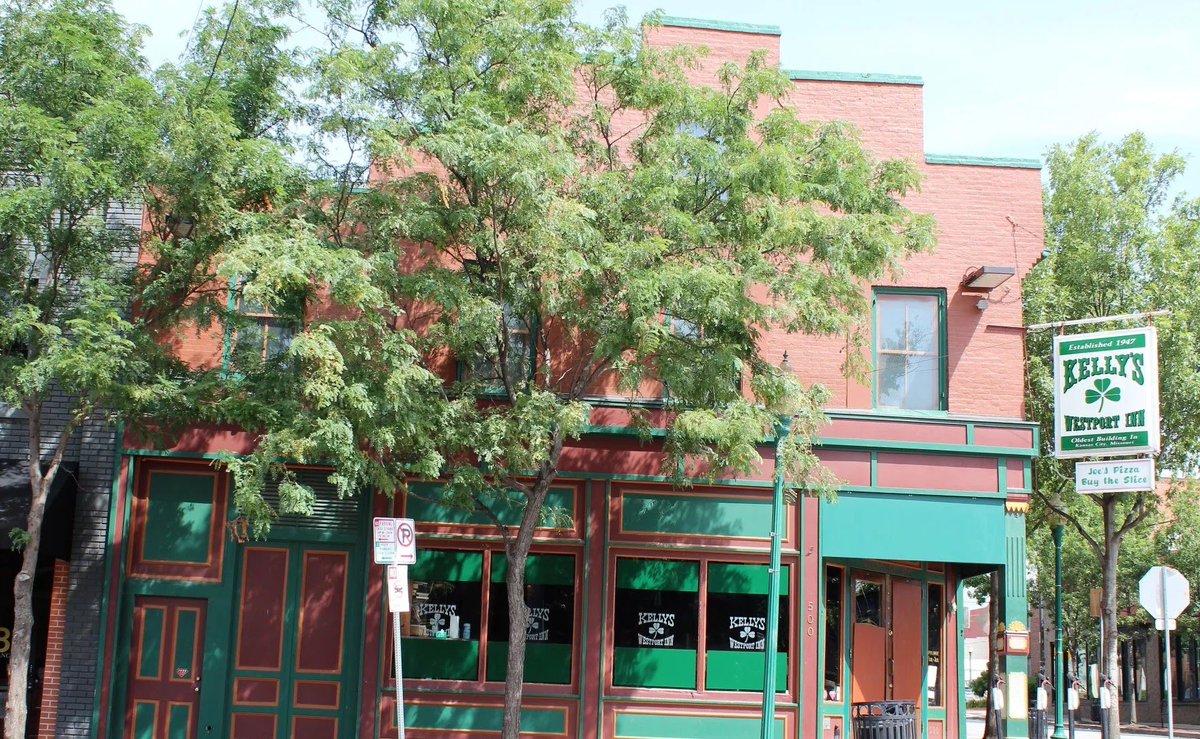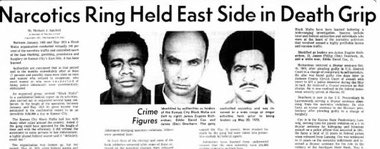The Town: A thread about the little known black history of Kansas City  https://abs.twimg.com/emoji/v2/... draggable="false" alt="📚" title="Bücher" aria-label="Emoji: Bücher">
https://abs.twimg.com/emoji/v2/... draggable="false" alt="📚" title="Bücher" aria-label="Emoji: Bücher">
#1: Troost Avenue (Part 1)
Troost Avenue is named after Dr. Benoist Troost. He was a physician arriving in KC during the early 1840s, a Dutch slave owner as well as one of the founding fathers of Kansas City, Missouri.
Troost Avenue is named after Dr. Benoist Troost. He was a physician arriving in KC during the early 1840s, a Dutch slave owner as well as one of the founding fathers of Kansas City, Missouri.
#2: Westport
Westport in KC was originally built off the backs of slaves during the 18th century. After the 1850s, the northern section of Plaza Westport was settled by slaves who purchased their freedom. The residents of the neighborhood back then referred to it as Steptoe.
Westport in KC was originally built off the backs of slaves during the 18th century. After the 1850s, the northern section of Plaza Westport was settled by slaves who purchased their freedom. The residents of the neighborhood back then referred to it as Steptoe.
#3: The Kansas City Call
The Kansas City Call is one of the largest black owned newspapers in the nation, they launched a number of significant “firsts” in negro journalism. The Call also publishes 4 weekly editions: the national, city, Missouri-Kansas and Texas editions.
The Kansas City Call is one of the largest black owned newspapers in the nation, they launched a number of significant “firsts” in negro journalism. The Call also publishes 4 weekly editions: the national, city, Missouri-Kansas and Texas editions.
#4: Bruce R Watkins
Tuskegee Airman, civil rights leader and politician, Bruce R Watkins is the first African American elected to Kansas City’s, city council. He was also a co founder of Freedom Inc.
Tuskegee Airman, civil rights leader and politician, Bruce R Watkins is the first African American elected to Kansas City’s, city council. He was also a co founder of Freedom Inc.
#5: Linwood (Part 1)
St. Joseph Hospital moved from their original location in 1917 to what is now the same area as the Linwood Shopping Center in Kansas City, MO. The MLK riots caused depopulation in the neighborhood so the hospital moved to I-435 & State Line Road.
St. Joseph Hospital moved from their original location in 1917 to what is now the same area as the Linwood Shopping Center in Kansas City, MO. The MLK riots caused depopulation in the neighborhood so the hospital moved to I-435 & State Line Road.
#6: Arthur Bryant
In 1974, Bryant’s BBQ was labeled as the single best restaurant in the nation in The New Yorker magazine, helping put a staple on KC BBQ. Harry Truman was a regular customer, President Jimmy Carter also made a famous, unannounced visit to his restaurant.
In 1974, Bryant’s BBQ was labeled as the single best restaurant in the nation in The New Yorker magazine, helping put a staple on KC BBQ. Harry Truman was a regular customer, President Jimmy Carter also made a famous, unannounced visit to his restaurant.
#7: Crips & Bloods (Part 1)
The evolution of the crips/bloods in Kansas City began during the late 1980s/early 90s. Gangsters from Cali. migrated to KC & other Midwest areas after cocaine prices dropped in the state. From 1989-1990, drive by shootings in KC rose from 15 to 297.
The evolution of the crips/bloods in Kansas City began during the late 1980s/early 90s. Gangsters from Cali. migrated to KC & other Midwest areas after cocaine prices dropped in the state. From 1989-1990, drive by shootings in KC rose from 15 to 297.
#8: Homer B Roberts
Roberts was a graduate of Kansas State University. In the early 1920s he became the first black man to own an automobile dealership in the country. By 1923, he would set up his first shop on 19th and Vine & sell to the black middle class of Kansas City.
Roberts was a graduate of Kansas State University. In the early 1920s he became the first black man to own an automobile dealership in the country. By 1923, he would set up his first shop on 19th and Vine & sell to the black middle class of Kansas City.
#9: Jackson County (Part 1)
By the 1860s, Jackson County held 3,944 slaves, most of them in the area of Independence and Westport. The first Jackson County Courthouse was built in Independence in 1827 by black slaves.
By the 1860s, Jackson County held 3,944 slaves, most of them in the area of Independence and Westport. The first Jackson County Courthouse was built in Independence in 1827 by black slaves.
#10: The Quindaro Freedmans School
Renamed Western University, the Quindaro Freedmans School is the only HBCU the state of KS ever had. It was established in 1865 in Kansas City, KS, revered as 1 of the best music schools in the nation.
Renamed Western University, the Quindaro Freedmans School is the only HBCU the state of KS ever had. It was established in 1865 in Kansas City, KS, revered as 1 of the best music schools in the nation.
#11: Leon Jordan
This KC politician, policeman, civil rights leader and co founder of Freedom Inc was assassinated in 1970. He was murdered a few years after he slapped a state lawmaker connected to the mafia. Both, the Italian & Black Mafia of KC contributed to his death.
This KC politician, policeman, civil rights leader and co founder of Freedom Inc was assassinated in 1970. He was murdered a few years after he slapped a state lawmaker connected to the mafia. Both, the Italian & Black Mafia of KC contributed to his death.
#12: General Hospital 2
By 1914, General Hospital 2 was the 1st public hospital in the US fully operated by African Americans. By 1930 it had moved from its original location to 22nd St. (now Kenwood Ave). Howard graduate, Dr William J Thompkins was its 1st negro superintendent.
By 1914, General Hospital 2 was the 1st public hospital in the US fully operated by African Americans. By 1930 it had moved from its original location to 22nd St. (now Kenwood Ave). Howard graduate, Dr William J Thompkins was its 1st negro superintendent.
#13: Porter Plantation
• 365 acre plantation owned by Rev. James Porter from 1832-1865
• 40-100 slaves
• Big house located at 2709 Tracy
• stretched from the locations of modern day Children’s Mercy, Operation Breakthrough, Troost Lake and the KC health department
• 365 acre plantation owned by Rev. James Porter from 1832-1865
• 40-100 slaves
• Big house located at 2709 Tracy
• stretched from the locations of modern day Children’s Mercy, Operation Breakthrough, Troost Lake and the KC health department
#14: James Milton Turner
James M. Turner was born a slave in St. Louis. Turner was a prominent politician & one of the first principals at Lincoln School (now Lincoln College Prep). He is also considered as a contributor to the establishment of Lincoln University of Missouri.
James M. Turner was born a slave in St. Louis. Turner was a prominent politician & one of the first principals at Lincoln School (now Lincoln College Prep). He is also considered as a contributor to the establishment of Lincoln University of Missouri.
#15: J.C Nichols (Part 1)
J.C Nichols was a prominent city planner in KC during the 20th century. His racial restrictions & home associations contributed to the de facto segregation in his subdivisions. AA never compromised of more than 5% of the pop. in any of his census tracts
J.C Nichols was a prominent city planner in KC during the 20th century. His racial restrictions & home associations contributed to the de facto segregation in his subdivisions. AA never compromised of more than 5% of the pop. in any of his census tracts
#16: Kansas City MLK Riots
Only 2 cities in the US had deadlier MLK riots than KC. On April 9th, around 200-300 students from mostly Central & Lincoln HS gathered near City Hall in a protest to demand the closure of the city& #39;s schools to commemorate the day of King& #39;s funeral.
Only 2 cities in the US had deadlier MLK riots than KC. On April 9th, around 200-300 students from mostly Central & Lincoln HS gathered near City Hall in a protest to demand the closure of the city& #39;s schools to commemorate the day of King& #39;s funeral.
#17: Wayne Miner
Born in Henry County, Mo, Miner was one of 11 children. As an adult he lived near 5th St. and Troost. Pvt. Wayne Miner was a Buffalo Solider and also the last American killed in WWI.
Born in Henry County, Mo, Miner was one of 11 children. As an adult he lived near 5th St. and Troost. Pvt. Wayne Miner was a Buffalo Solider and also the last American killed in WWI.
#18: KC schools (Part 1)
The first 4 high schools of Kansas City were Central (1869), Lincoln (1891), Manual (1897) and Westport (1899). Lincoln was the only high school for blacks at the time. In 2016, Lincoln was ranked the best HS in Missouri and the 67th best in the country.
The first 4 high schools of Kansas City were Central (1869), Lincoln (1891), Manual (1897) and Westport (1899). Lincoln was the only high school for blacks at the time. In 2016, Lincoln was ranked the best HS in Missouri and the 67th best in the country.
#19: Swope Park (Part 1)
Swope Park was created to benefit the working class. George Kessler knew whites would be the real beneficiaries of Swope bc the park would give a “permanent residence character to certain sections of the city”. His plan was used to racially divide KC.
Swope Park was created to benefit the working class. George Kessler knew whites would be the real beneficiaries of Swope bc the park would give a “permanent residence character to certain sections of the city”. His plan was used to racially divide KC.
#20: KC Schools (Part 2)
In the fall of 2019, Kansas City Girls Prep Academy plans to open & move into the Hogan Prep Elementary school building. This would make it KCs 1st single gender public charter school. The city will have 21 charter schools by the end of the spring.
In the fall of 2019, Kansas City Girls Prep Academy plans to open & move into the Hogan Prep Elementary school building. This would make it KCs 1st single gender public charter school. The city will have 21 charter schools by the end of the spring.
#21: Henry Perry
Perry is known as the Father of KC BBQ. He owned a restaurant & hotel in the early 1900s located at 19th & Vine which was one of the most communal areas for blacks during that time. He was also known for annually giving away free food to the less fortunate.
Perry is known as the Father of KC BBQ. He owned a restaurant & hotel in the early 1900s located at 19th & Vine which was one of the most communal areas for blacks during that time. He was also known for annually giving away free food to the less fortunate.
https://twitter.com/coachwilmore_/status/1091542996124946432?s=21">https://twitter.com/coachwilm...
#22: Leon’s Thirftway
Leon’s Thirftway has been in business for 50 + years making it the oldest black owned grocery store in America. Located in Kansas City, Mo, the building was acquired after the King Riots. Unfortunately, Leon’s will be closing it’s doors for good this week.
Leon’s Thirftway has been in business for 50 + years making it the oldest black owned grocery store in America. Located in Kansas City, Mo, the building was acquired after the King Riots. Unfortunately, Leon’s will be closing it’s doors for good this week.
#23: Dennis Carpenter
Mr. Carpenter was the first AA superintendent for the LSSD. Just recently, he chose to resign after months of racial tension & a battle for diversity training. He walked away with a $750,000 contract buyout. #storylink=cpy">https://www.kansascity.com/news/local/article233059232.html #storylink=cpy">https://www.kansascity.com/news/loca...
Mr. Carpenter was the first AA superintendent for the LSSD. Just recently, he chose to resign after months of racial tension & a battle for diversity training. He walked away with a $750,000 contract buyout. #storylink=cpy">https://www.kansascity.com/news/local/article233059232.html #storylink=cpy">https://www.kansascity.com/news/loca...
#24: Residency (Part 1)
In the early 1900s, it’s safe to say 8/10 AA in Kansas City lived between Troost and Woodland Avenue north of Thirty first Street down to Independence Avenue. Between 800 and 1000 African Americans in Kansas City owned real estate around this time.
In the early 1900s, it’s safe to say 8/10 AA in Kansas City lived between Troost and Woodland Avenue north of Thirty first Street down to Independence Avenue. Between 800 and 1000 African Americans in Kansas City owned real estate around this time.
#25: J.C Nichols (Part 2)
In 1908, one of J.C Nichols 1st restrictions were written to last 25 years. Beginning in 1923, Nichols developed the Country Club District with “1000 Acres restricted” prohibiting billboards and African Americans.
In 1908, one of J.C Nichols 1st restrictions were written to last 25 years. Beginning in 1923, Nichols developed the Country Club District with “1000 Acres restricted” prohibiting billboards and African Americans.
#26: KC Schools (Part 3)
Ever wondered why Ruskin, Center, Hickman Mills etc aren’t apart of the KCMSD? Initially, any Missouri city w/ 500,000 + residents could only have 1 school district. In 1957, w/ KC’s population approaching half a million, lawmakers bumped it to 700,000.
Ever wondered why Ruskin, Center, Hickman Mills etc aren’t apart of the KCMSD? Initially, any Missouri city w/ 500,000 + residents could only have 1 school district. In 1957, w/ KC’s population approaching half a million, lawmakers bumped it to 700,000.
#27: KC Schools (Part 4)
This ensured that the district would not automatically merge with these other school systems that at the time were majority white. When Kansas City’s population peaked in the late 1960s, it remained under the 700,000 threshold.
This ensured that the district would not automatically merge with these other school systems that at the time were majority white. When Kansas City’s population peaked in the late 1960s, it remained under the 700,000 threshold.
#28: 18th & Vine (Part 1)
18th & Vine from the early 20th century had become a city within a city for the black community of KC. Schools,entertainment venues,social clubs,churches & recreational facilities filled the neighborhood before it emerged as the Jazz District in the 50s
18th & Vine from the early 20th century had become a city within a city for the black community of KC. Schools,entertainment venues,social clubs,churches & recreational facilities filled the neighborhood before it emerged as the Jazz District in the 50s
https://twitter.com/coachwilmore_/status/1152575955715710977?s=21">https://twitter.com/coachwilm... https://twitter.com/CoachWilmore_/status/1152575955715710977">https://twitter.com/CoachWilm...
#29: KC Schools (Part 5)
Two prominent examples of white flight in KC were Paseo & Central HS. From 1959-1969 Paseo went from 6.6 percent black to 97.8 percent black.
In 1955, Central had 1533 white vs 195 black students. By 1965, they only had 16 white vs 2648 black students.
Two prominent examples of white flight in KC were Paseo & Central HS. From 1959-1969 Paseo went from 6.6 percent black to 97.8 percent black.
In 1955, Central had 1533 white vs 195 black students. By 1965, they only had 16 white vs 2648 black students.
#30: Paseo (Part 1)
The Paseo YMCA building was completed in 1914. It was operated by AA for years...a building for us, open 24 hours a day. It also served as a meeting place for black social clubs & study groups. After integration the building became uneconomical to operate.
The Paseo YMCA building was completed in 1914. It was operated by AA for years...a building for us, open 24 hours a day. It also served as a meeting place for black social clubs & study groups. After integration the building became uneconomical to operate.
#31: Watermelon Hill (Part 1)
Watermelon Hill was the segregated area set aside for blacks in Kansas City’s Swope Park. Specifically Shelter No. 5 between the Starlight Theater and front entrance of the zoo was were thousands of blacks would meet for lounging & special occasions
Watermelon Hill was the segregated area set aside for blacks in Kansas City’s Swope Park. Specifically Shelter No. 5 between the Starlight Theater and front entrance of the zoo was were thousands of blacks would meet for lounging & special occasions
#32: Jabez Smith
Jabez Smith was the largest slave owner in Jackson county. He owned several hundred slaves making him one of the major slave owners in the country. His home was located at the current site of William Chrisman HS.
Jabez Smith was the largest slave owner in Jackson county. He owned several hundred slaves making him one of the major slave owners in the country. His home was located at the current site of William Chrisman HS.
#33: Platte County (Part 1)
KCI airport is in Platte County, an area known to have had several plantations worked by enslaved people. It is assumed that many slaves are buried on the land that now holds the KCI airport.
KCI airport is in Platte County, an area known to have had several plantations worked by enslaved people. It is assumed that many slaves are buried on the land that now holds the KCI airport.
#34: Westport (Part 2)
The slave trade was welcomed and nurtured in KC by slave owner A.G. Boone. He owned a general store located where Kelly’s Westport Inn is now. Many assume this was a place where slaves were auctioned off and sold during the late years of slavery.
The slave trade was welcomed and nurtured in KC by slave owner A.G. Boone. He owned a general store located where Kelly’s Westport Inn is now. Many assume this was a place where slaves were auctioned off and sold during the late years of slavery.
#35: Black Mafia(Part 1)
The Black Mafia in Kansas City was also known as the Purple Capsule Gang for the way they distributed heroin. They controlled the East Side of KC by the end of the 1960s and their leaders were Eddie Cox, Eugene Richardson & James Dearborn.
The Black Mafia in Kansas City was also known as the Purple Capsule Gang for the way they distributed heroin. They controlled the East Side of KC by the end of the 1960s and their leaders were Eddie Cox, Eugene Richardson & James Dearborn.
#36: Arrington Klice
Klice was from Arkansas but he moved to KC as a kid & attended Lincoln HS. After traveling with Jack Johnson as a young man, he’d become the owner & coach of the Gateway Boxing Club near 24th and Tracy, training over 140 champions.
Klice was from Arkansas but he moved to KC as a kid & attended Lincoln HS. After traveling with Jack Johnson as a young man, he’d become the owner & coach of the Gateway Boxing Club near 24th and Tracy, training over 140 champions.
#37: Presidents (Part 1)
President LBJ, in 1965 signed an amendment to the Social Security Act. This created Medicaid and Medicare health insurance for the elderly and low income families/individuals. He did this at the Harry S. Truman library in Independence, Mo.
President LBJ, in 1965 signed an amendment to the Social Security Act. This created Medicaid and Medicare health insurance for the elderly and low income families/individuals. He did this at the Harry S. Truman library in Independence, Mo.

 Read on Twitter
Read on Twitter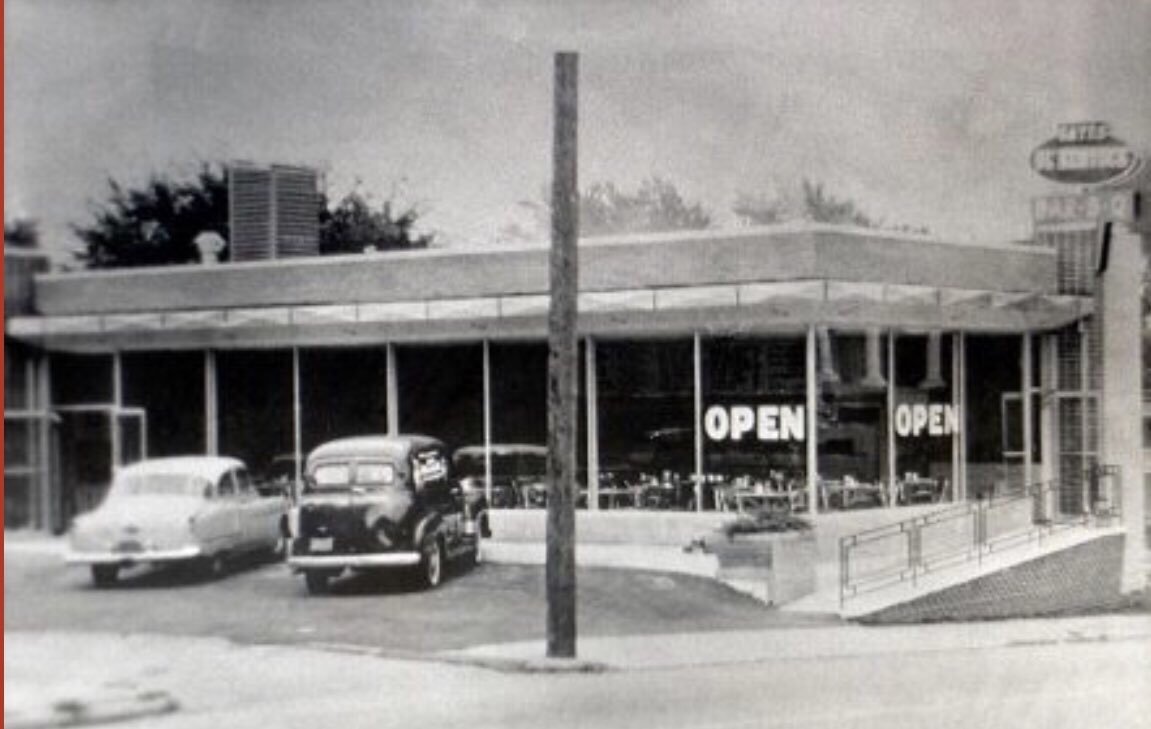 " title="The Town: A thread about the little known black history of Kansas City https://abs.twimg.com/emoji/v2/... draggable="false" alt="📚" title="Bücher" aria-label="Emoji: Bücher">" class="img-responsive" style="max-width:100%;"/>
" title="The Town: A thread about the little known black history of Kansas City https://abs.twimg.com/emoji/v2/... draggable="false" alt="📚" title="Bücher" aria-label="Emoji: Bücher">" class="img-responsive" style="max-width:100%;"/>

